Budapest
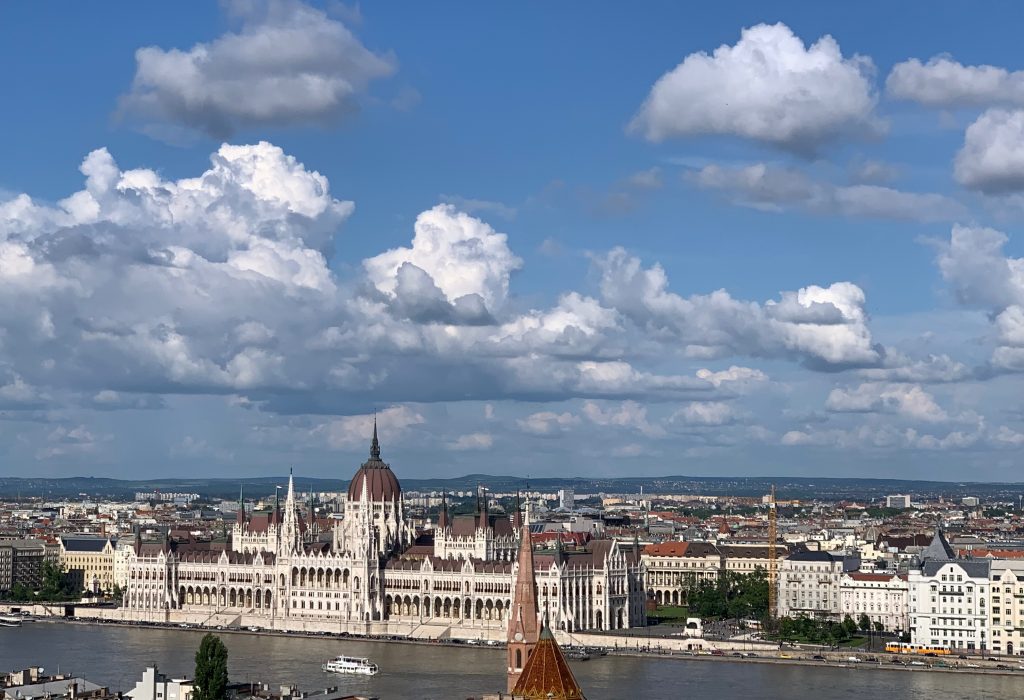
Budapest (made of Buda, the old town, and Pest, the new part of the city) owes its beauty to the hand of history that has shaped it the way it is. Overall, it has a fin-de-siecle feel to it, for it was during the capital’s ‘golden age’ in the late 19th century that most of what we see today was built. And in Budapest the past is just around the corner, with bullet holes and shrapnel pockmarks on buildings and poignant memorials. But there is also much joy as loved concert halls and theaters are built and renovated, metro lines extended and busy streets repaved and pedestrianized.
Here is our proposed itinerary to merge in its beauty in 3 days. If you have time we do suggest checking out the thermal baths and the little village of Szentendre.
Day 1 - Parliament and jewish quarter
Start your itinerary from the parliament.
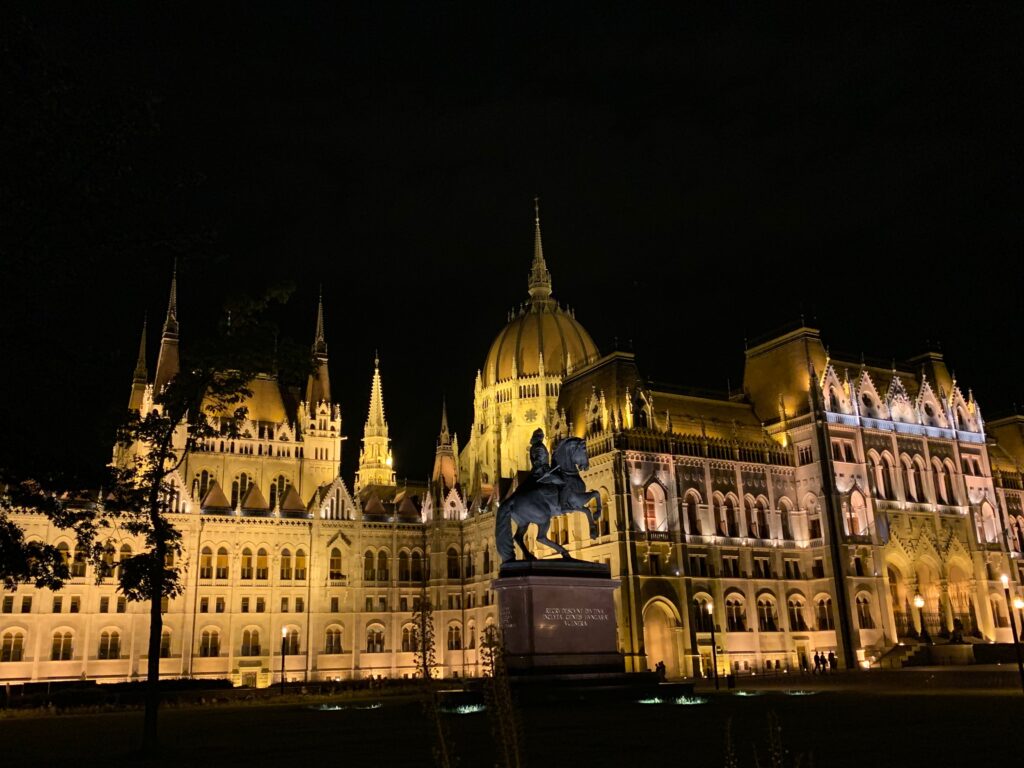
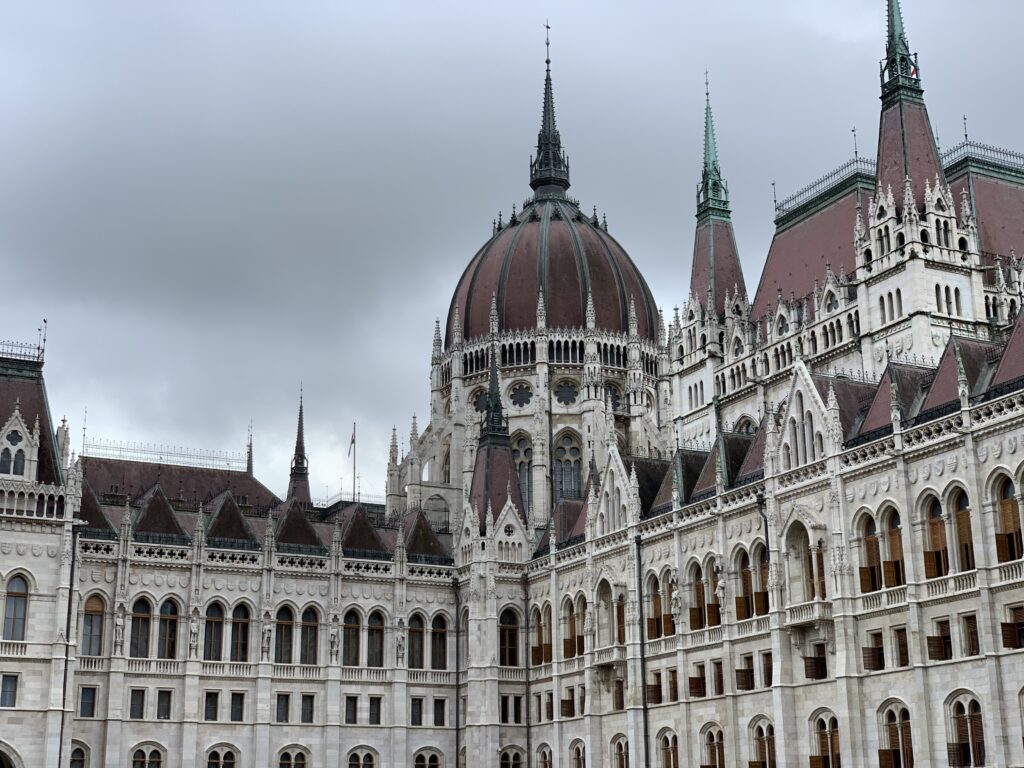
It is hungsry largest building, stretching for 270 m along the danube in pest. The choice of the location is not made by chance. As a counterweight to the royal palace that rises high on buda hill on the opposite side of the river, the placement was meant to signify that the nation’s future lay with popular democracy and not royal prerogative. TCompleted in 1902 the structure is thought to have been inspired by london’s rebuilt palace of Westminster. The building is a blend of neo gothic, neo romanescque and neo baroque, with sculptures of the great and the good – kings, princes an hystorical figures – gazing onto the river from the western façade, ehile the main door, the lion gate has been recently renovafted. Unfortunately not a lot of attention (or money) was spent on the materials for the building: the ornatevstructure was surfaced with a porous form of limestone that does not resists pollution very well, so the bulding is under constant renovation. Circle it from the outside, ticketed vsits are feasible but they will take a full morning and they need to be booked in advance.
Facing the parliament, walt to your left throught the gardens of Kossuth Lajos square separating it from the official governements buildings. Continue straight through a dedalus of small streets till you reach the X gardens. From there admire the view on your left of the Szechenyi Lanchid bridge, then turn right towards th historical Graham building that now hosts the Four Season Hotel. Walk the lobby with its art deco style and exit to the left into the pedestrian zrinyi u.
Walk it towards Sain Stephen basilica.
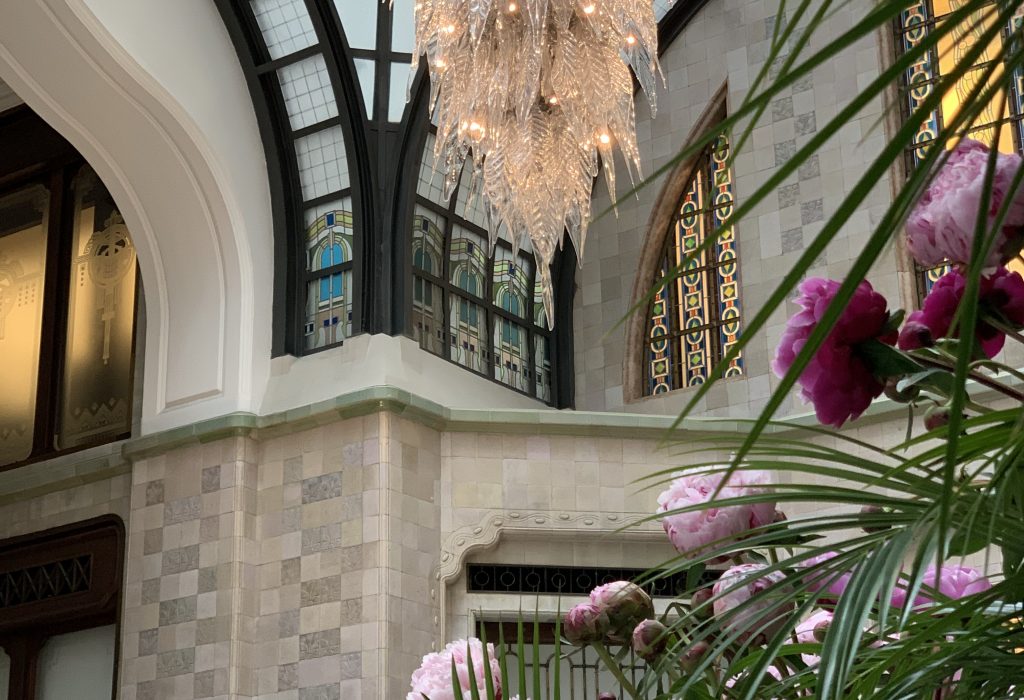
It s the most important catholic church in all of hungsry, if for no other reason than that it contains the mummified right hand of the chirch patron. It’s neoclassical, in the form of a Greek cross and can accommodate 8000 worshippers. It took 60 yers to be completed in 1905. The façade is anchored by 2 bell towers, one of which contains a bell weighting 9 tonnes (even if av replacement for one looted by the Germans). Behind the towers is a 96 m-high dome that can be reached by 2 lifts and 40 steps (or 303 steps if you want to walk).
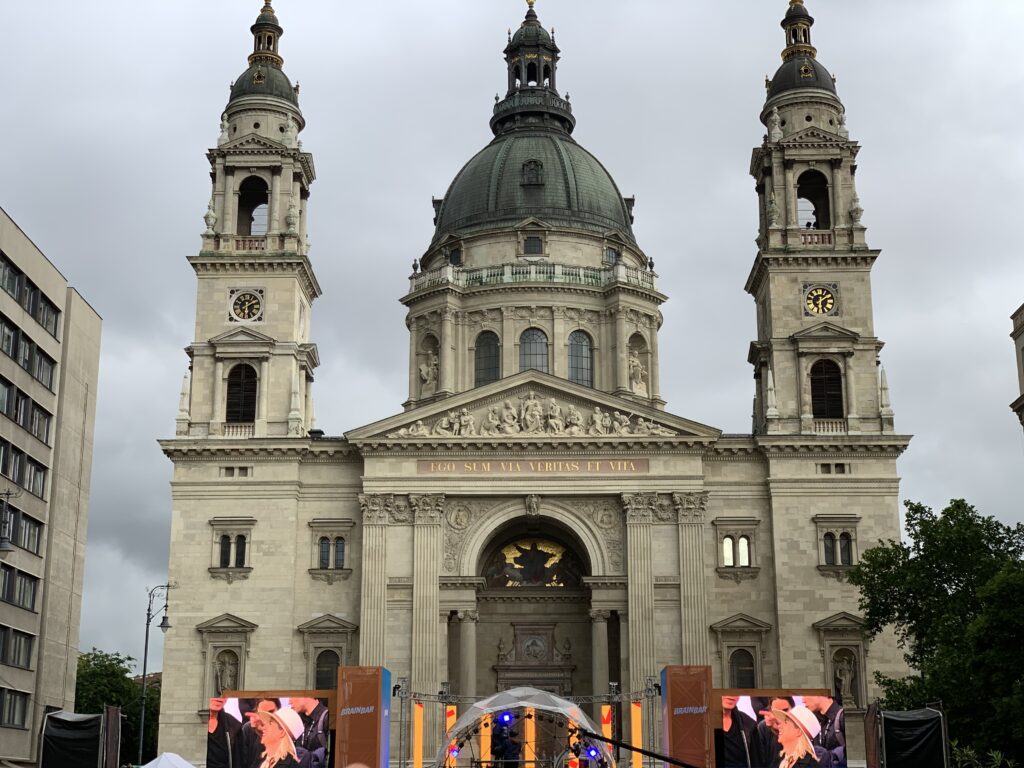
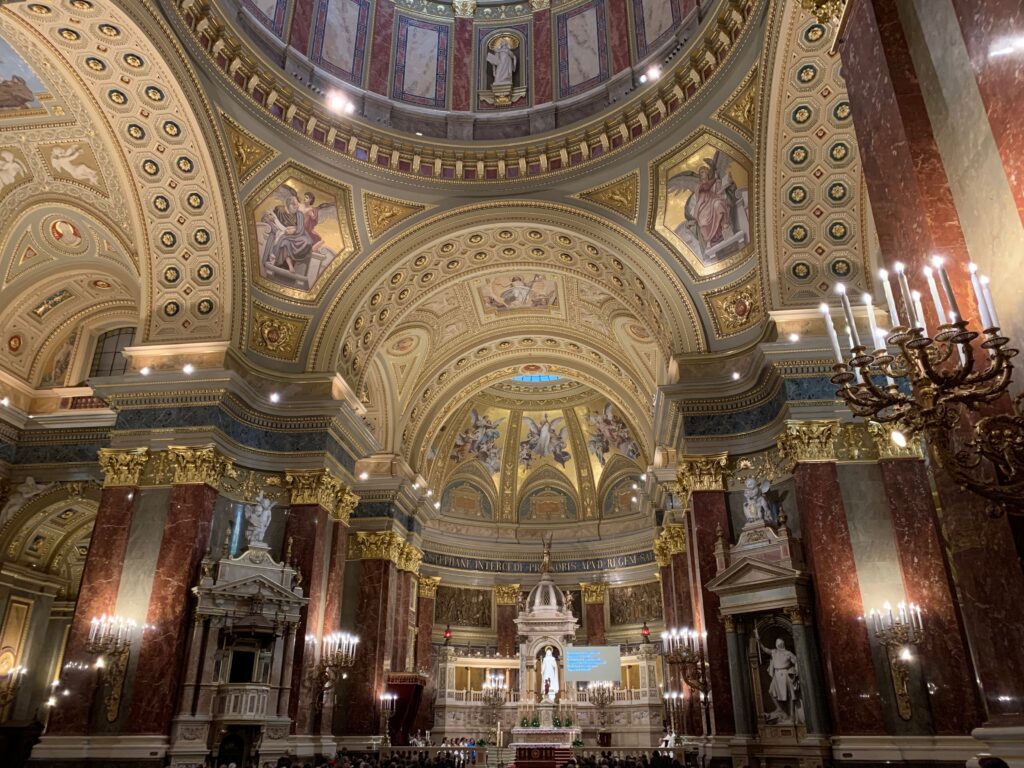
The interior of the basilica is rather gloomy and dark, with the sole exception of the golden mosaics on the inside of the dome. Behind the altar and to the left is the basilica’s major drawcard: the holy right chapel, that contains the Holy Right, the mummified right hand of st Stephen. It was restored here by empress maria Theresa after being found in a monastery in bosnia, snatched after ww2 but soon returned. If you put a 200ft coin in the slot to illimunate it, and look from the right side, you will see the knuckles.
Guded tours in English deprt at 9.30, 11, 2 and 3. At 8 pm organ concerts are hekd here, on Thursdays an Fridays. Free and worthwhile.
When out of the basilica take a left and walk towards the Danube to the eclectic Vaci utca. Once you reached Erzsebet hid, turn left towards the Dohani Sinagigue. With its crenellated red-and-yellow glazed brick façade and two enormous Moorish-style towers, is the largest jewish house of worship in the world outside New York City, seating 3000 worshippers.
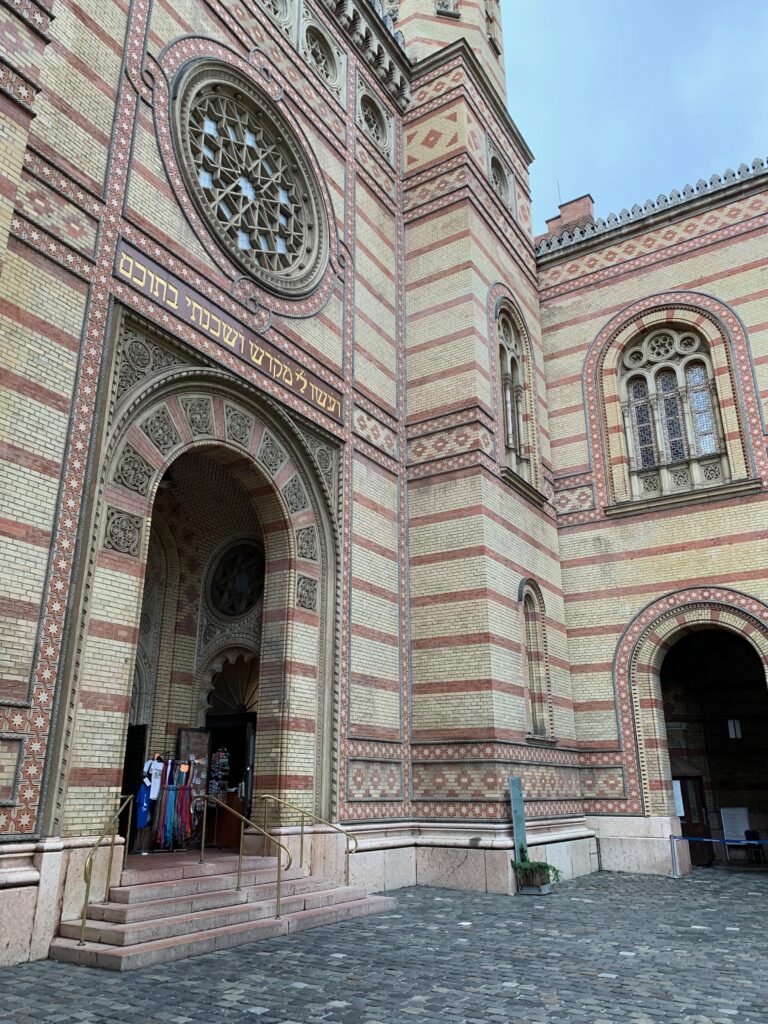
After the security check, turn right towards the Synagogue entrance, wear your kippa and look for the flag of your country in the main aisle. There you will find a volunteer eager to tell you every secret he know about this sacred place.
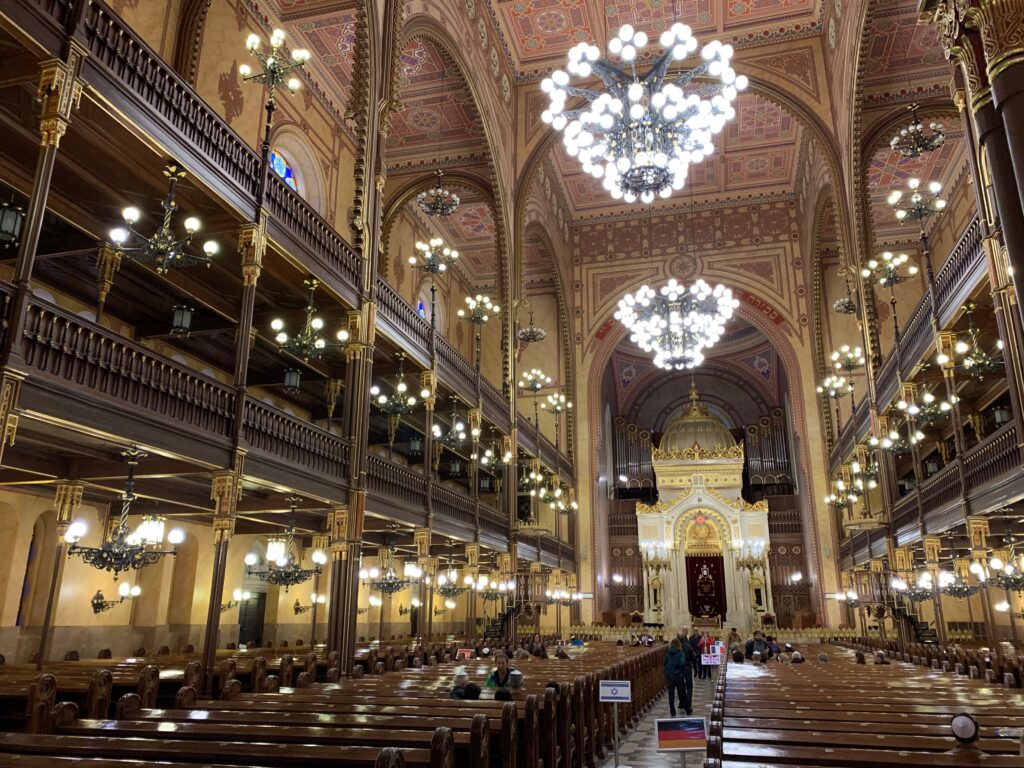
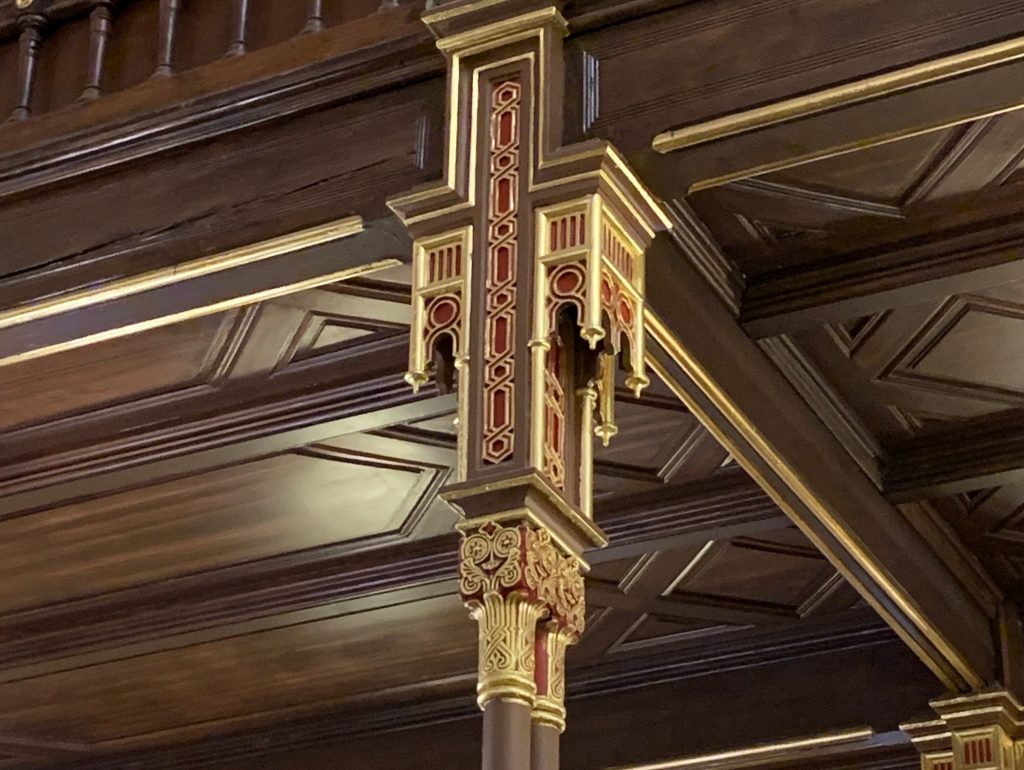
You will learn that when built in 1859 the Synagogue created scandal among the most orthodox of the jewish community because of its sfarzo, the innumerevoli windows and the introduction for the first time of music (through an organ). The rose windows, especially the central one, recall some leements of Christian churches; furthermore, an organ in a synagogue had never been heard of (mind, the organ is technically not ‘inisde’ the synagogue and is played by a non jewish so that no jewish is working o a Saturday even by playing an organ). These “innovations” and the nicknsme “the jewish cathedral”, led to the orthodox jewish bulding their own more somber synagogue just some meters away (Rumbach Synagogue) and to a scism inside the jewish community: non-ortodox jewish started cutting their hair, the beard, in 1853 the hemancipation lwas were promulgated so that jews could marry non-jews.
All around the synagogue you may notice the six pointed stars f the Azkenazy jews, along with the less known 8 pointed star of the Sephardites jews from spain: this second symbol, the Solomon star, is an universal symbol of happiness.
Your guide will take you outside of the synagogue, through the cemetery and into the back garden. Your attention will be immediately captured by a metallic sculpture of a tree, but turn left first and adimere the temple of heroes: this a a classically built synagogue, rectancular, with no decorarions and a cupola on top, dedicated to all the jews that lost their life in the 15-18 war. Both the main synagogue and the Temple are pointing towards Jerusalem.
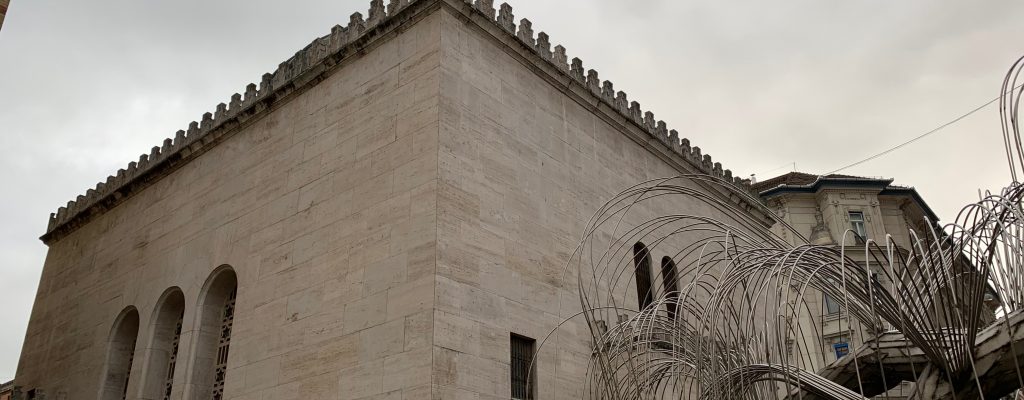
Very surprisingly the II WW did not affect massively the Hungarian jews during the first years. On the contrary, Humgary was a refuge for all the Jews of the neighbouring nation, running away from the Nazi’s deportation. Onli in 1944 this safety collapsed and in 1 year 650.000 hungarin jews were deported. To these martirs it’s dedicated the tree of life, a metallic sculpture of an olive tree were every leaf has engraved the name of a deported Hungarian Jew. The tree is shaped like an upside down menorah (the 6 armed jewish candelabra) and behibd it there are Moses tables of the law: the protation of the menorah and the absence of words on the tables signifies the absence of any law during the genocide and the upside down world they were living in. No flowers decorate the base of the tree, but pebbles and stones; during their 40 years in the desert, Jews had no flowers for the tombs of the dead anc could only cover them with stones.
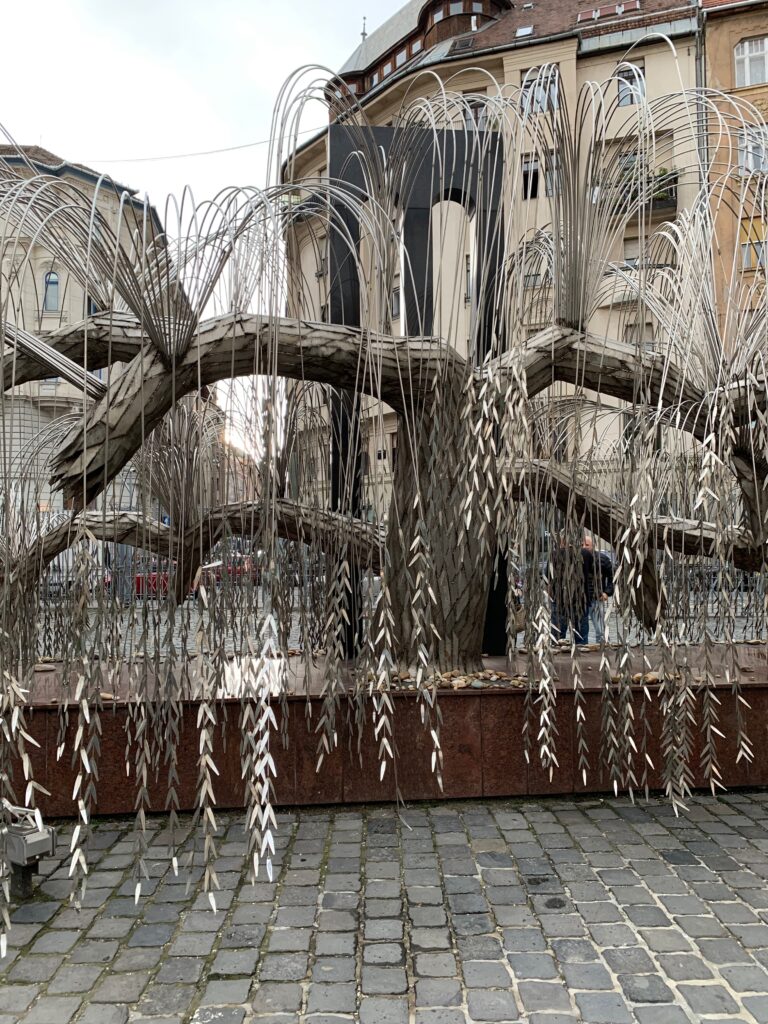
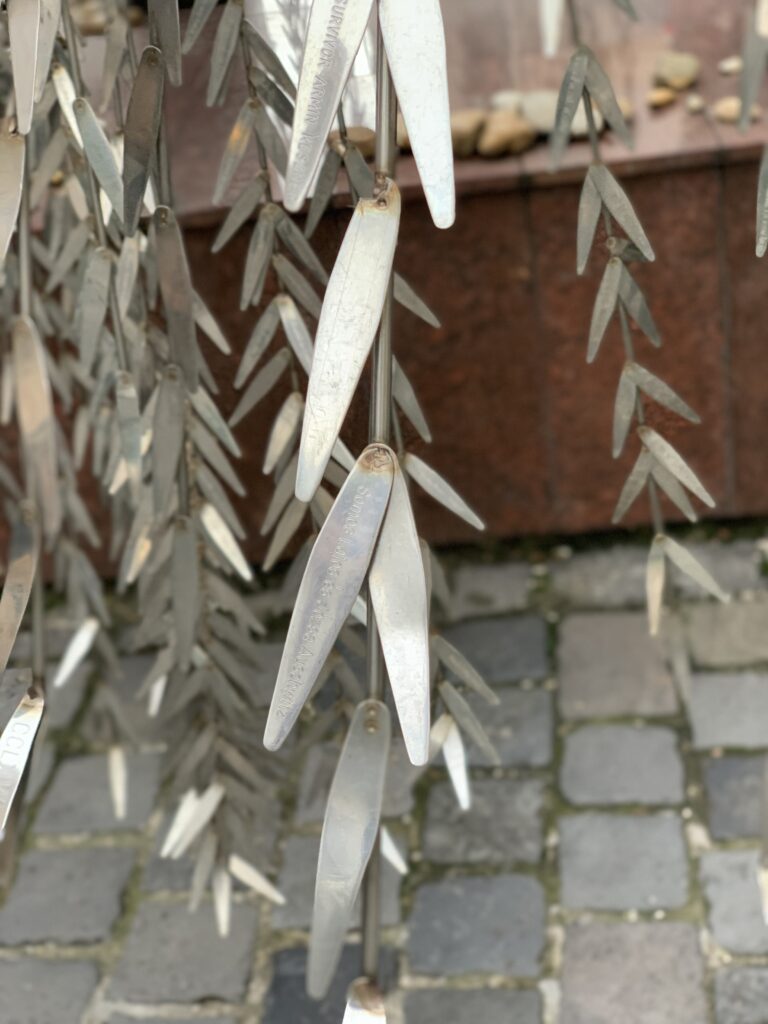
But during the dark times of 1944, several people saved hundreds of lifes, by hiding and protecting the persecuted jews: their name are engraved in the steli of the Garden of the giusti, right behind your back. On the ground, what looks like a tomb is instead dedicated to the “Schindlers” of Budapest, the impresario that protected the persecuted jews. I was very proud to see the name of the Italian patriot Giorgio Perlasca who saved so many innocent lives.
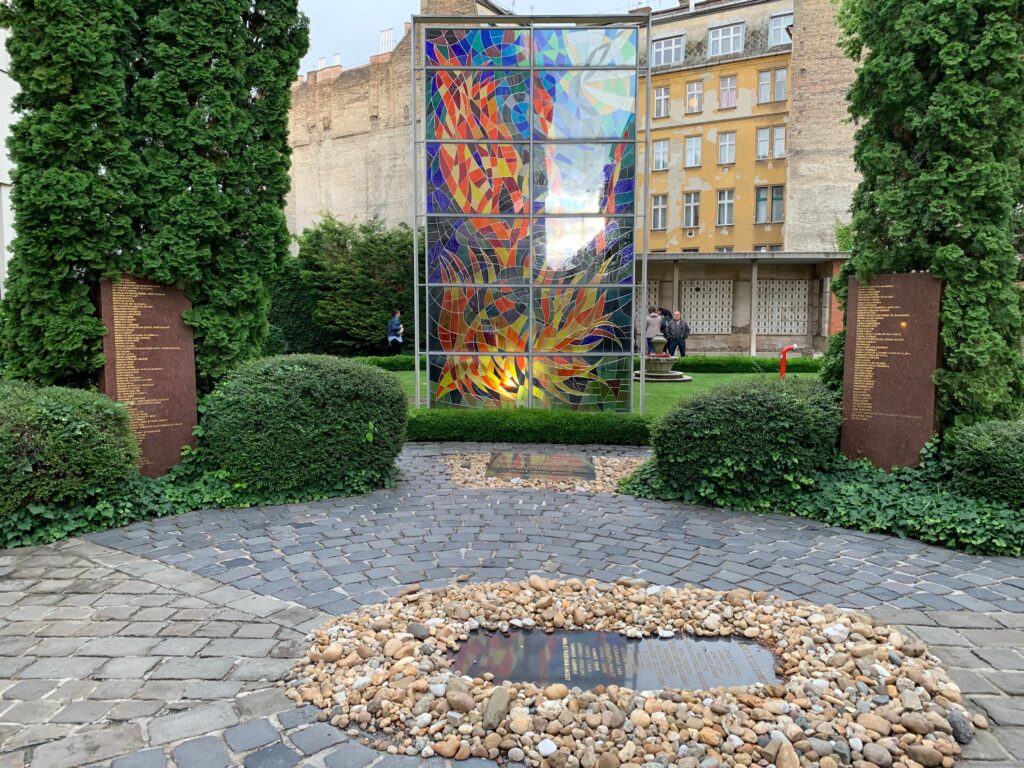
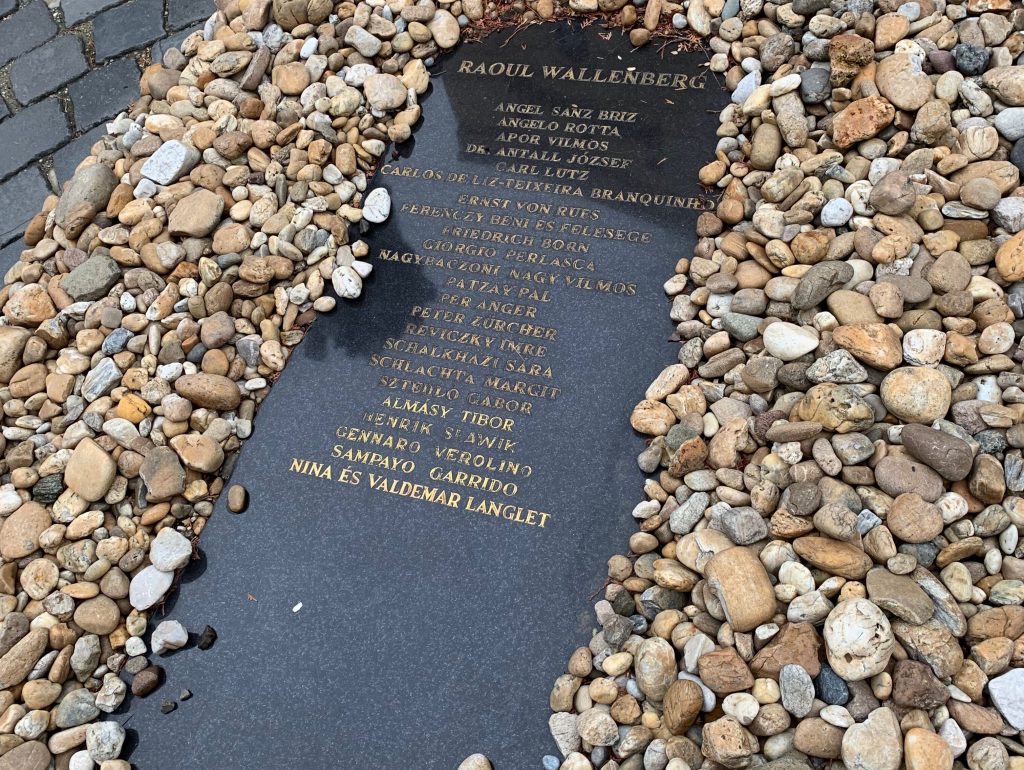
And finally the glass sculpture signifies the eveliness of the Nazis purified by fire.
The visit will end with your exit through a small gate at the back of the synagogue. Continue forward and take a left, walking towards the opera house.
From the opera house, premiatevi by walking to Caviar and Bull for a nice fancy dinner.
Day 2 - Castle District
Castle Hill (Varhegy), also called the Castle Quarter, is a 1km-long limestone plateau towering above the Danube. The walled area consists of two distinct parts: the Old Town to the north, where commoners lived in the Middle Ages; and the Royal Palace, the original site of the castle built in the 13th century, to the south. There are many ways to reach Caste Hill, but the most fun is to board the Siklo, a funicular railway built in 1870 that ascends from Clark Adam ter at the western end of Chain Bridge to Szent Gyorgy ter near the Royal Palace.
Walk up Varfok utca from Szell Kalman ter to Vienna Gate, the medieval entrance to the old town. The large building to the west with the superbly colored majolica-tiled roof containes the National Archives (Orszagos Leveitar; 1920). To the west of Becsi kapu ter (Vienna Gate square) – a weekend market in the middle ages – is an attractive group of burgher houses.
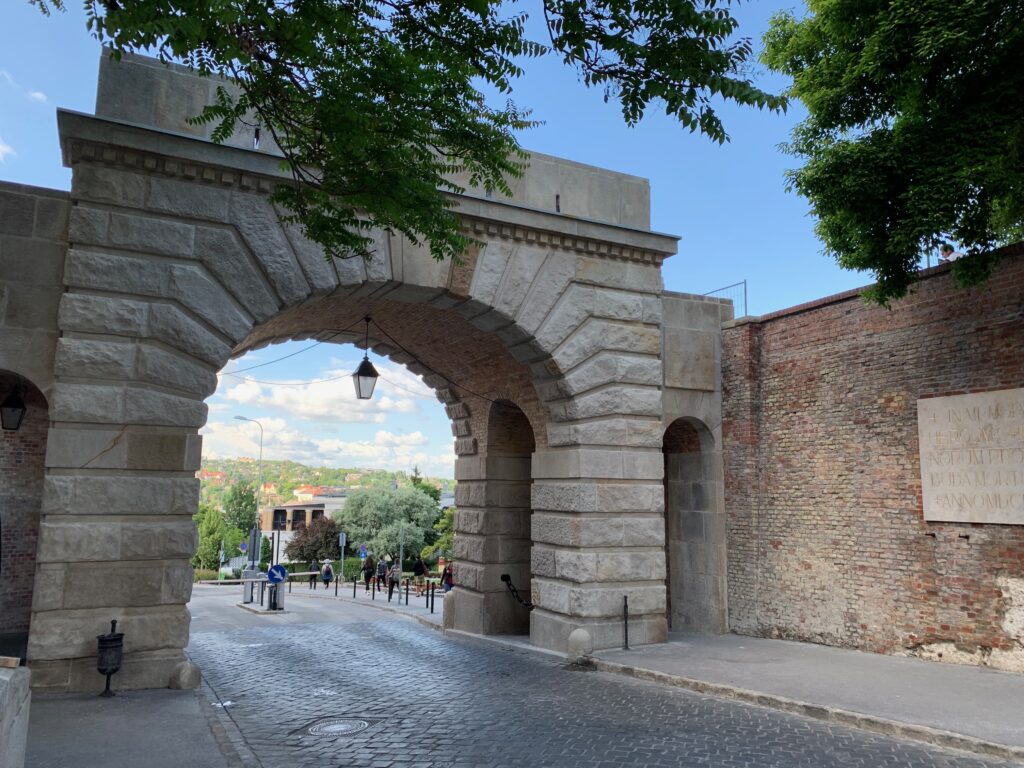
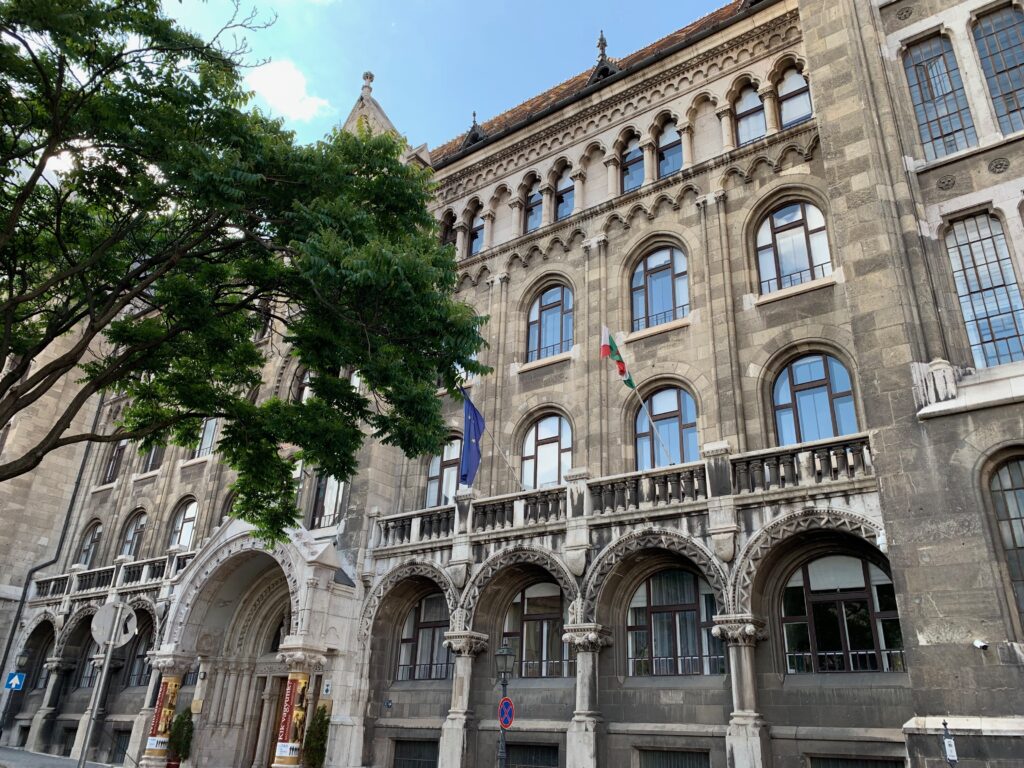
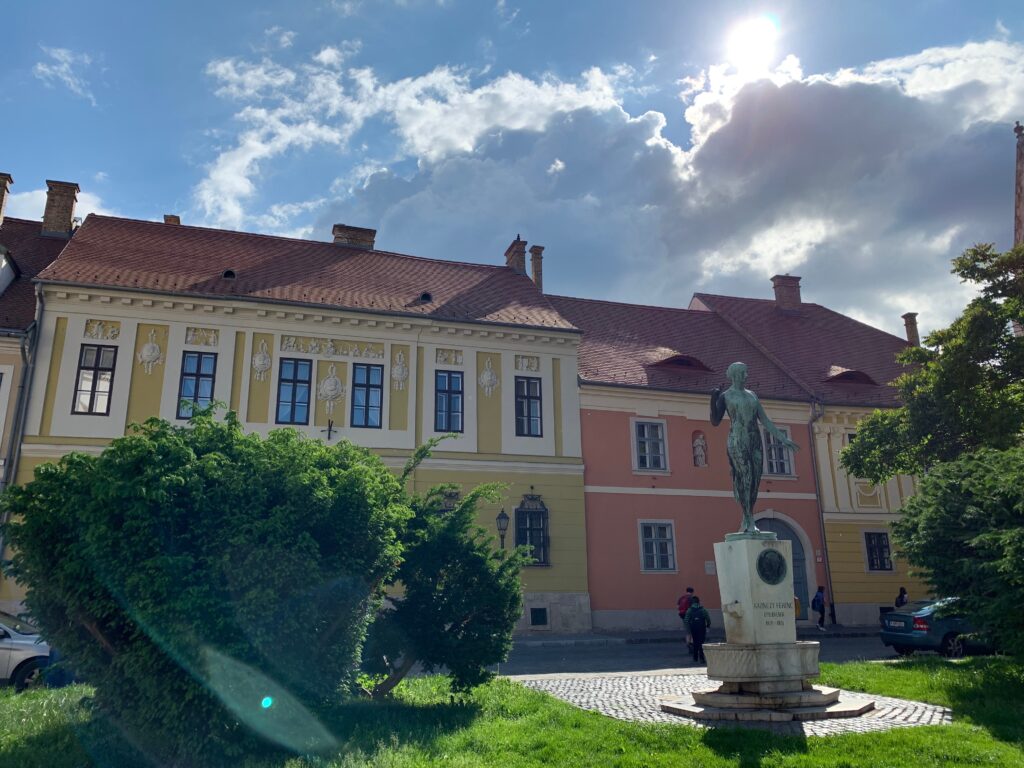
Narrow Tancsics Mihaly is full of little houses painted in lively hues and adorned with statues. In many courtyard entrances you’ll see sedilla (13th century stone niches perhaps used as merchants stalls). Further along the road to the south-east at Tancsics Mihaly utca 9 is the former prison where the leader of the 1848-49 war of independence was held. The architecturally controversial Hilton Budapest incorporating parts of a medieval Domenican church and a baroque Jesuit college, is further south.
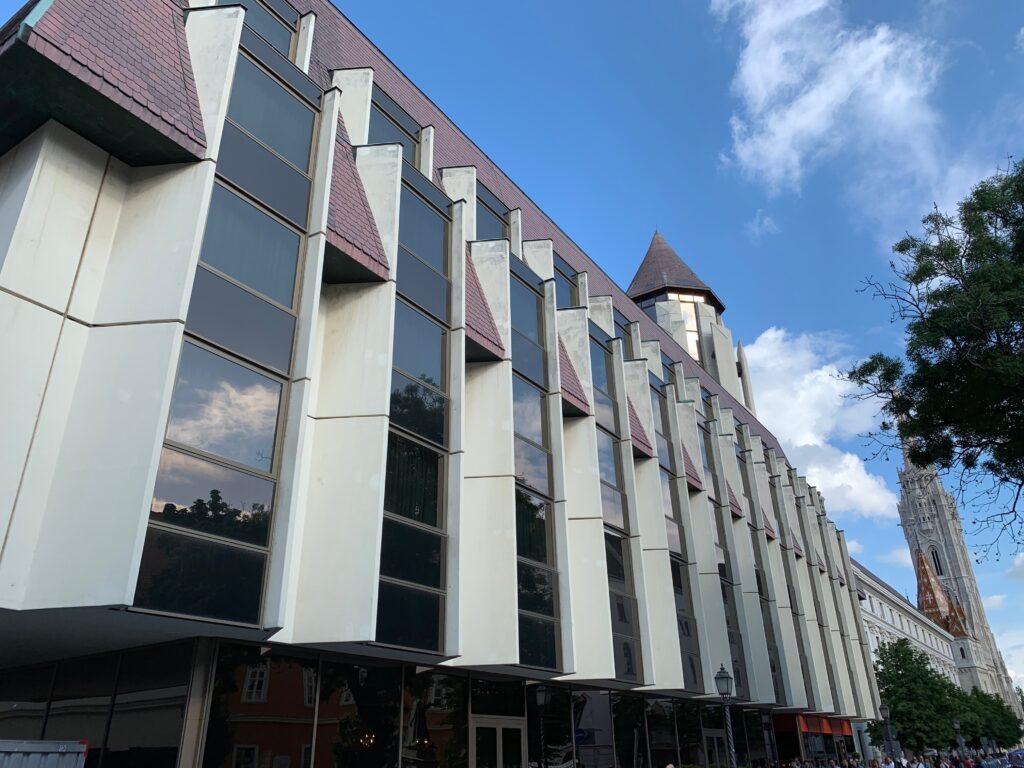
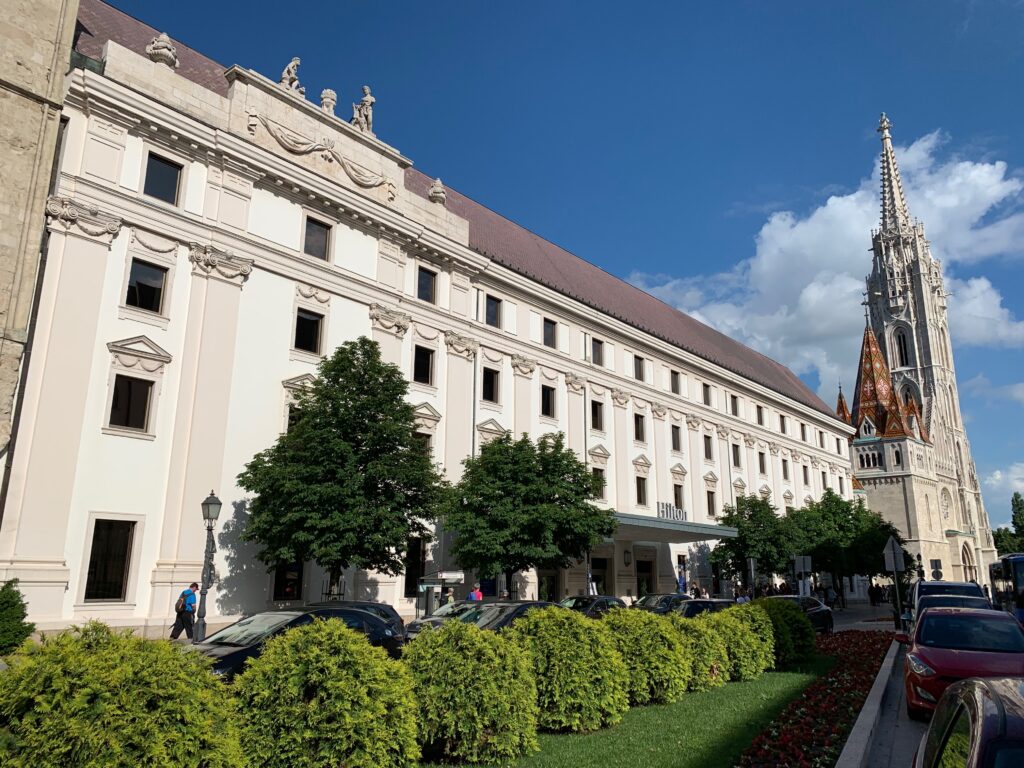
Just past the Hilton you will have on your left Matthias Church, a neo-Gothic creation designed in 1896 and so named because King Matthias Corvinus married Beatrice here in 1474. The church has a delicate spire and a colorful Zsolnay-tiled roof. Organ concerts take place here on ceratain evenings (usually Friday and Saturday at 8 pm), continuing a tradition from 1867 when Franz Liszt’s Hungarian Coronation Mass was first played here for the coronation of Franz Joseph and Elizabeth.
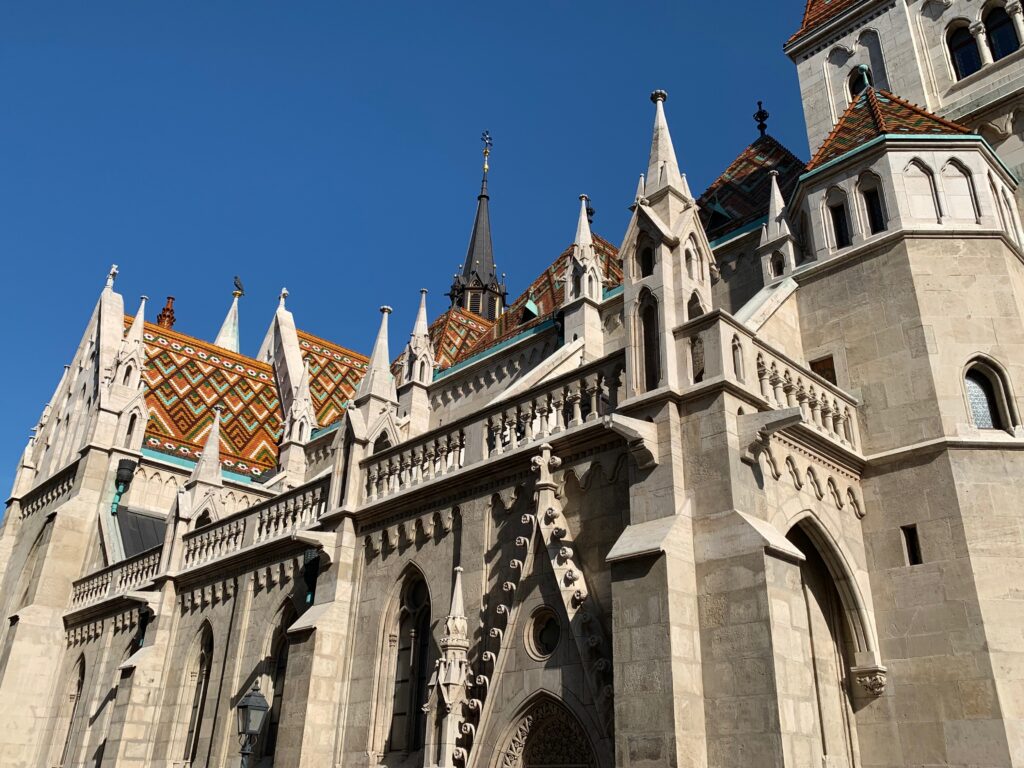
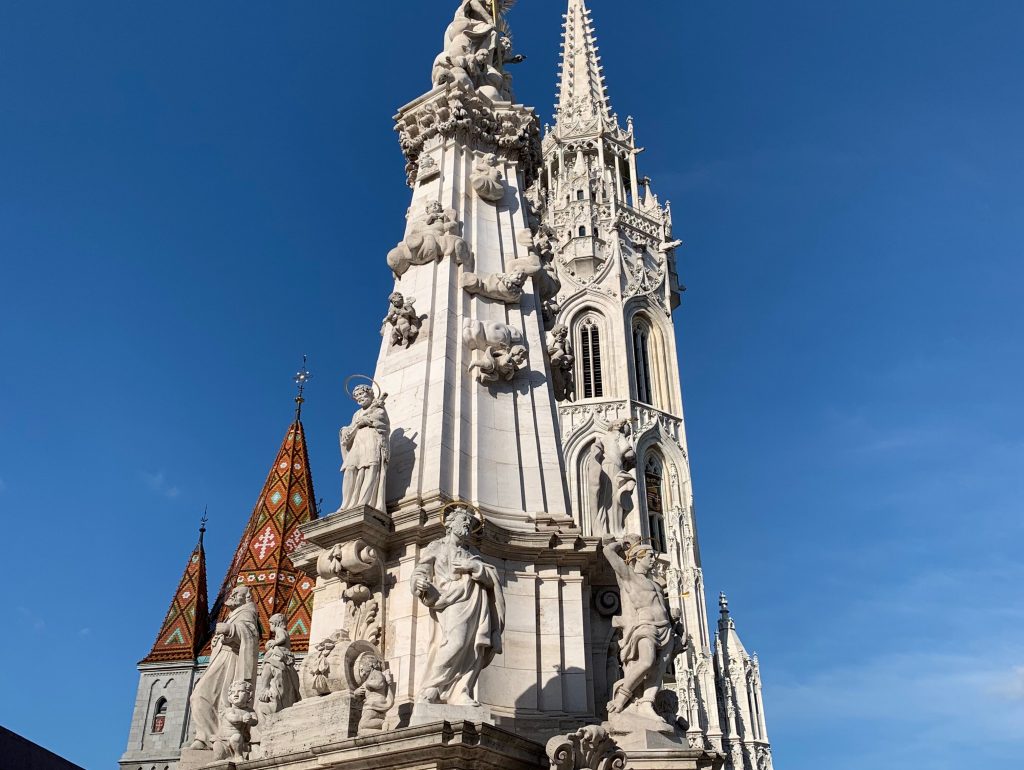
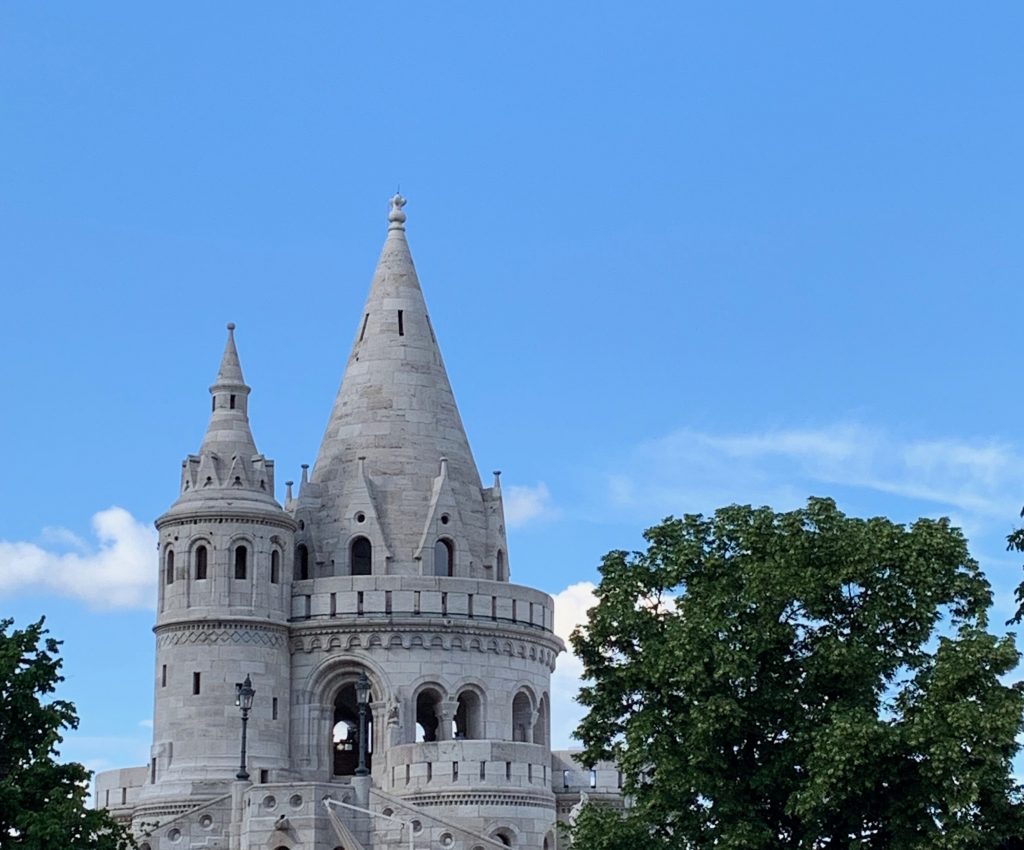
The same architect that built the church, in 1905 designed a viewing platform right behind it that took the name of Fishermen’s Bastion. The bastion is a neo-Gothic masquerade that looks medieval and offers among the best views in Budapest.
The bastion’s name was taken from the medieval guild of fishermen responsible of defending this stretch of the castle walls.
The panorama terrace was built with the idea to recall the old times, thus the bastion looks rather like a fairy tale castle. From here you have the best unobstructed views of the entire Budapest downtown, Parliament Building and Danube River.
The café serves beer, sandwiches, and cakes in a very casual atmosphere. The Bastion can be visited during the day time for a small entrance fee, but if you come at night you can easily bypass the small metal gate and see the towers and terraces.
Below Castle Hill is a 2km-long network of caves formed by thermal springs. The caves were used formilitary purposes during the Turkish occupation, as air-raid shelters during WWII, and as a secret military installation during the Cold War. Two sections ca be visited. The Buda Castle Labyrinth is a 1200m-long system 16 m under the Castle District that explores how the caves have been used since prehistoric times in five separate labyrinths encompassing 10 halls and galleries. It’s good fun and a relief from the heat of a hot day, but it can get scary if you lose your way or when you have to tour it with lanterns after 6pm. Far more instructive is the excellent Hospital in the Rock; to reach it, walk to the western walls of Castle Hill and get the stairs or the elevator one level down. Step outside at the feet of the walls and turn right. The Hospital in the Rock gives guided tours every hour.
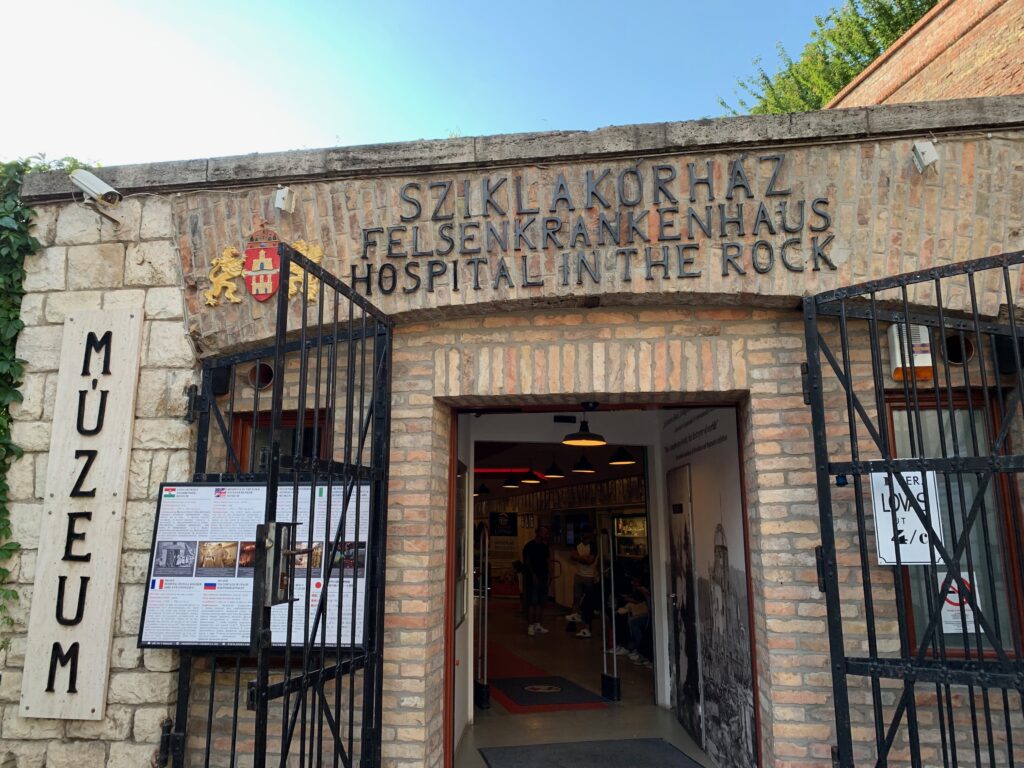
It was used extensively during WWII and again during the 1956 Uprising against the USSR. The visit starts with a 9 minutes video explaining the geological nature of the caves and how the major of Budapest constructed tunnels to join the caves before the War. An english-speaking guide will then walk you through tunnels that have nothing in common with those of the Labyrinth: they are corridors of a underground hospital that was perfectly functioning during WWII. It contains original medical equipment from the ’40s and 200 wax figures. The triage room, the ER, an operating room with 2 operating tables, the first anesthesia machine (featured in the movie Evita alongside Madonna…), and the wards make you go back in a time when this hospital was state-of-the-art and when the real war heroes were the doctors. In October 1944 a bombing destroyed the water supply and for 3 weeks infections spread among the wounded. A second part of the tunnel system will take you to the 1956 ward, showing the difference in the beds and equipment. The last 15 minutes of the tour will walk you through the newest section, built as a nuclear bunker during the Cold War. Gas masks, decontamination showers, everything was ready to face a new little boy/fat man that fortunately never happened. It is more meant to raise the awarness about what some of the nuclear bombs that are currently known could do to our cities.
Take the elevator back to the walls and a final stroll towards the Royal Palace.
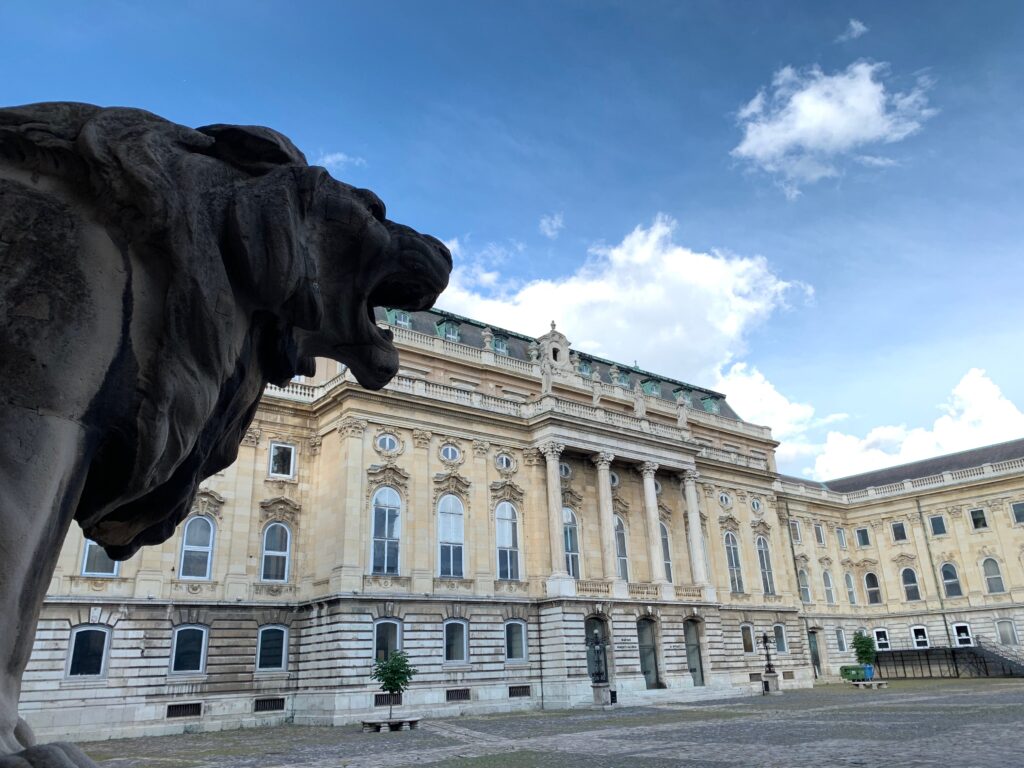
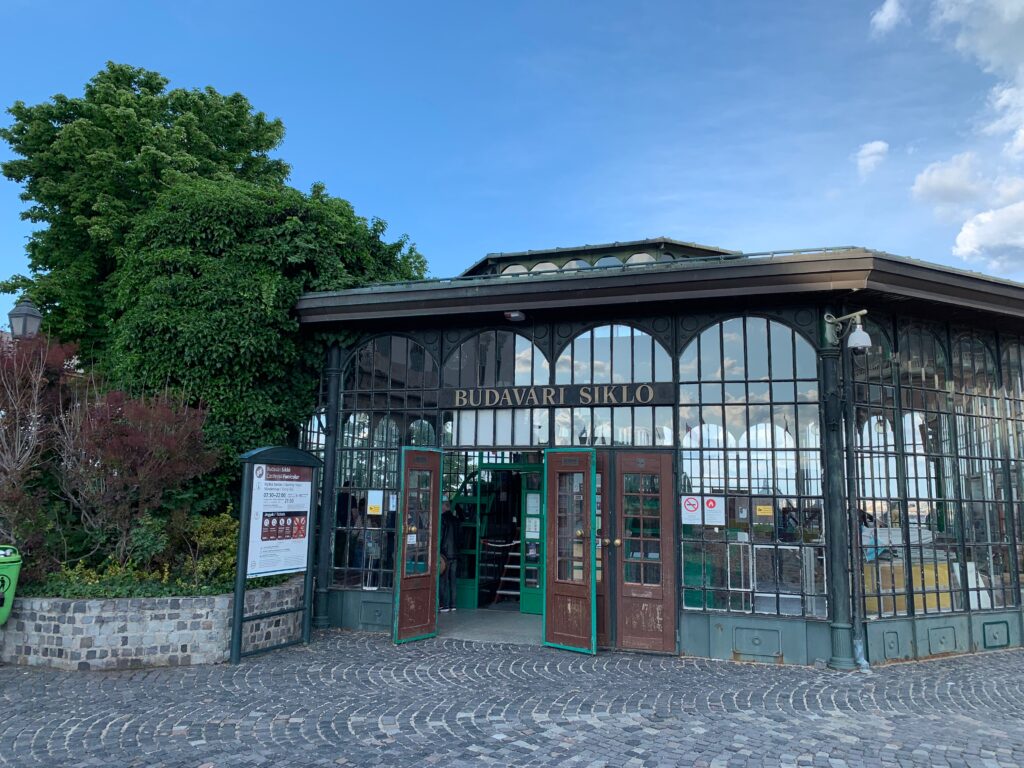
The enormous Royal Palace has been razed and rebuilt at least six times over the past seven centuries. Bela IV established a residence here in the mid-13th century and subsequent kings added to it. The Palace was leveled int he battle to rout the Turks in 1686; the Hasburgs rebuilt it but spent very little time there. Today the palace contains two important museums, the National Library and an abundance of statues. There are two entrances. The first is via the Hasburgs Steps and through an ornamental getaway dating from 1903. The other way is via Corvinus Gate, with its big black raven symbolizing king Matthias Corvinus.
Day 3 - Margaret Island and Erzsebetvaros
Margaret Island (pronounced Margit) is neither Buda nor Pest. This 2.5km-long island has always been the domain of one religious order or another until the Turks arrived and turned what was then called the Islands of Rabbits into a harem, from which all “infidels” were barred. It’s been a public park open to everyone since the mid-19th century.
Since there are not a lot of options for eating on the Island unless you go for a hotel fare, start your day at a Spar supermarket, where you can get loaves of bread, cured meat and sliced cheese, and a cheap bottle of good Tokaj. Once your lunch is packed, walk Margaret Bridge, the yellow bridge that introduces the Ring Rd to Buda. It’s unique in that it doglegs in order to stand at right angles to the Danube where it converges at the southern tip of Margaret Island.
Right at the souther tip of the island you will be able to rent a pedal coach, which is the best way to enjoy exploring the island in a hot late spring day.
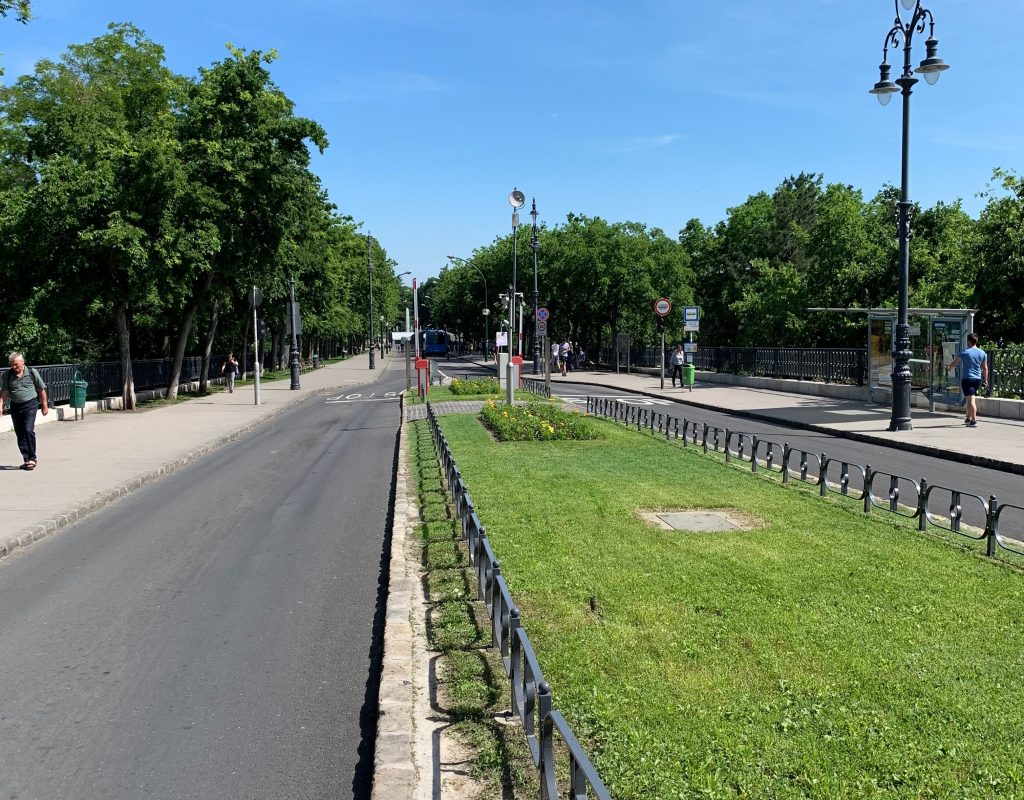
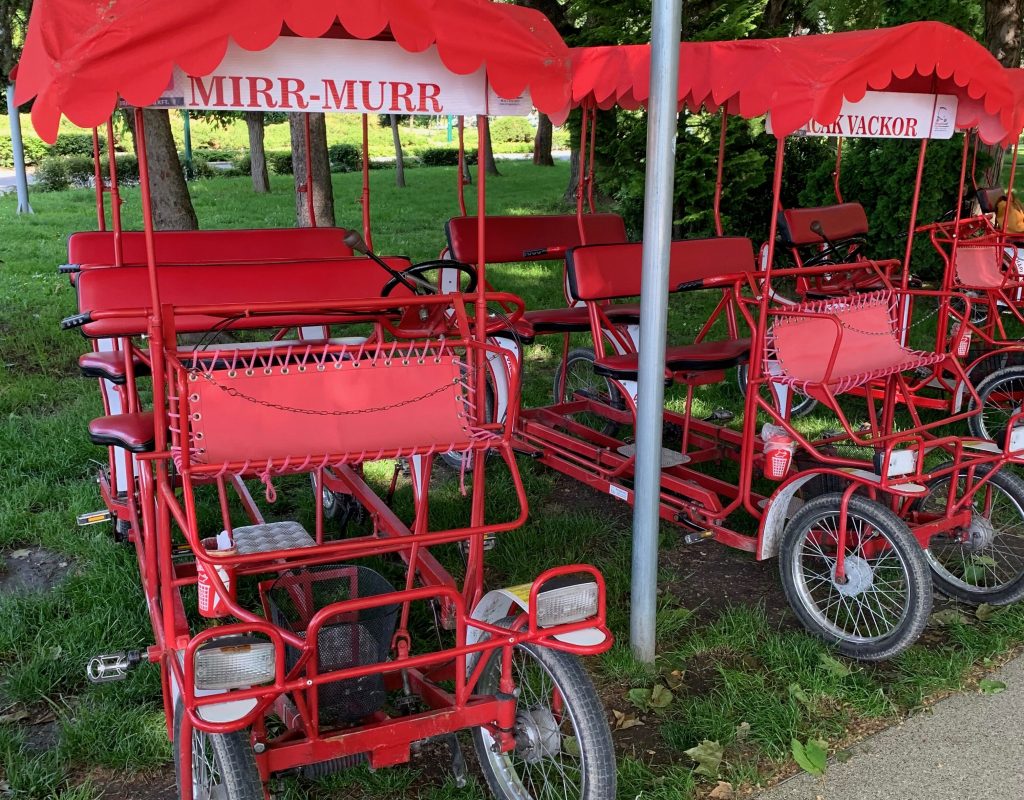
Start pedaling towards the trail on your right hand side. This will take you close to the running and cycling track, and a short stop there will allow you to admire the view on Pest from the middle of the Danube.
If you continue straight, you will bump into the Mini-Zoo, quite a nice facility with no entry fees where kids (and bigger kids like us) can learn more about endangered birds such as storks (regularly fed), peacocks and eagles. For a small fee you can buy food for the horses and the deers and feed them.
The Island is not overly endowed with important sights and landmarks, boasting a couple of large swimming complexes, a thermal spa, gardens and shadowed walkaways. But keep going towards the center of the island and you will find two historical sites.
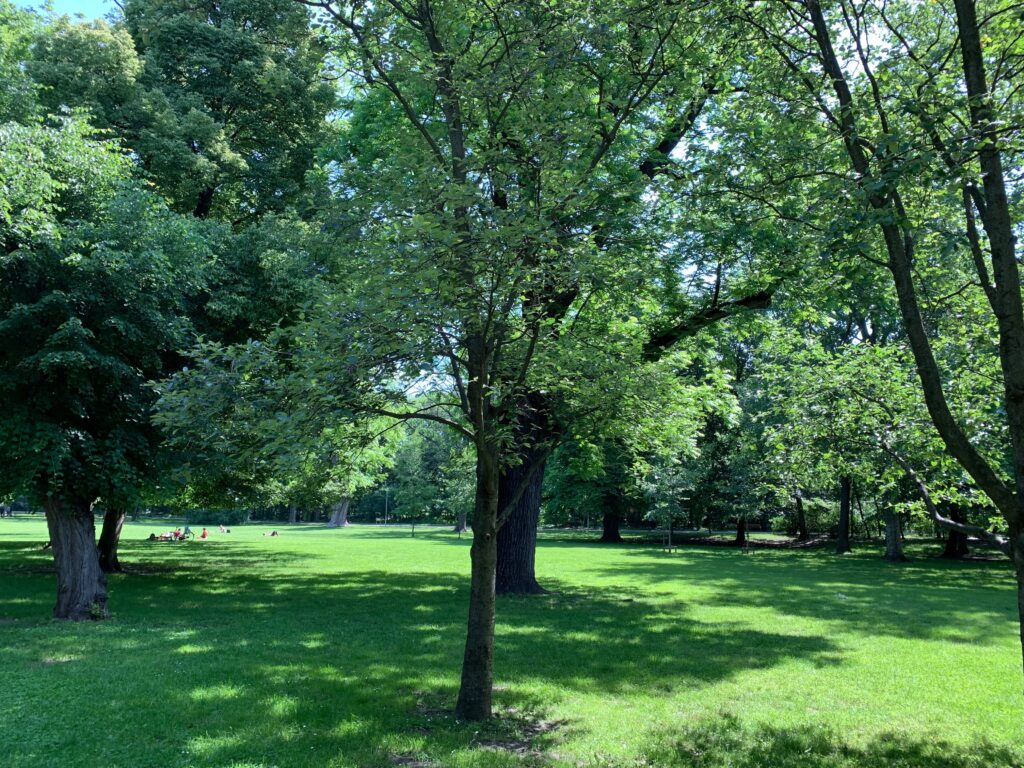
A ruin is all that remains of the 13th-century convent built by Bela IV, where is daughter, St Margaret, lived. According to the story, the king promised to commit his daughter to a life of devotion in a nunnery if the Mongols were driven from the land. They were and she was – at nine years of age.
Further on you will find the ruins – no more than a tower and a wall dating to the late 13th century – of a Franciscan church. Much more preserved is Saint Michael Church, actually a replica of the original one built here in the 12th century, still in use and very popular for summer weddings.
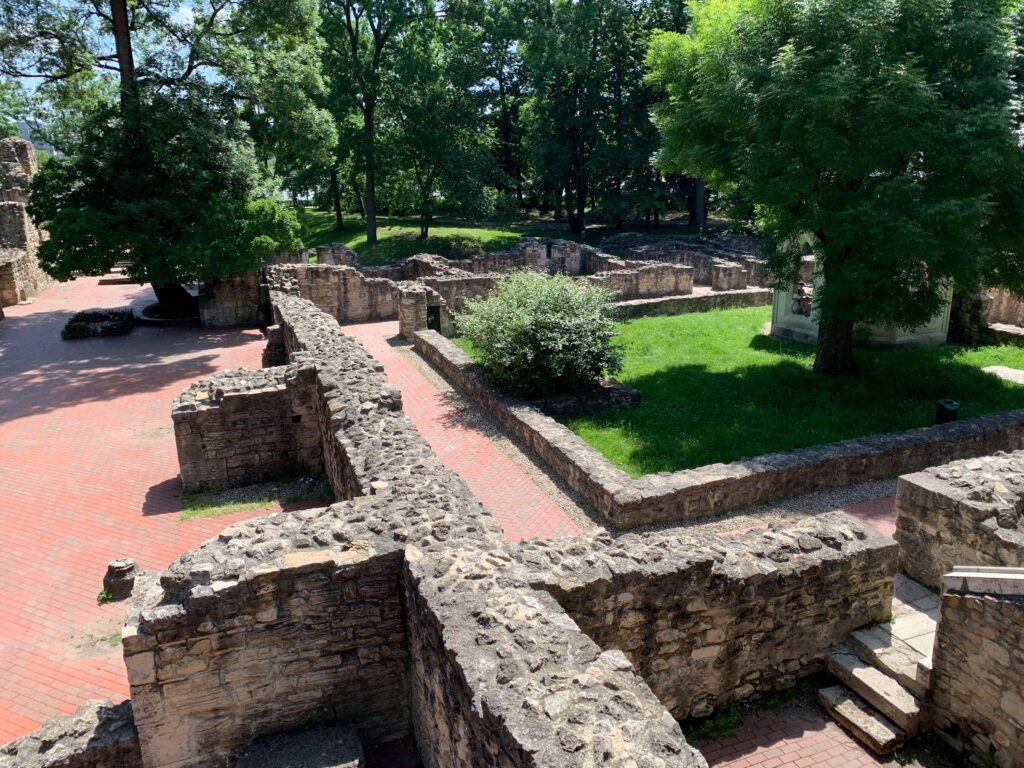
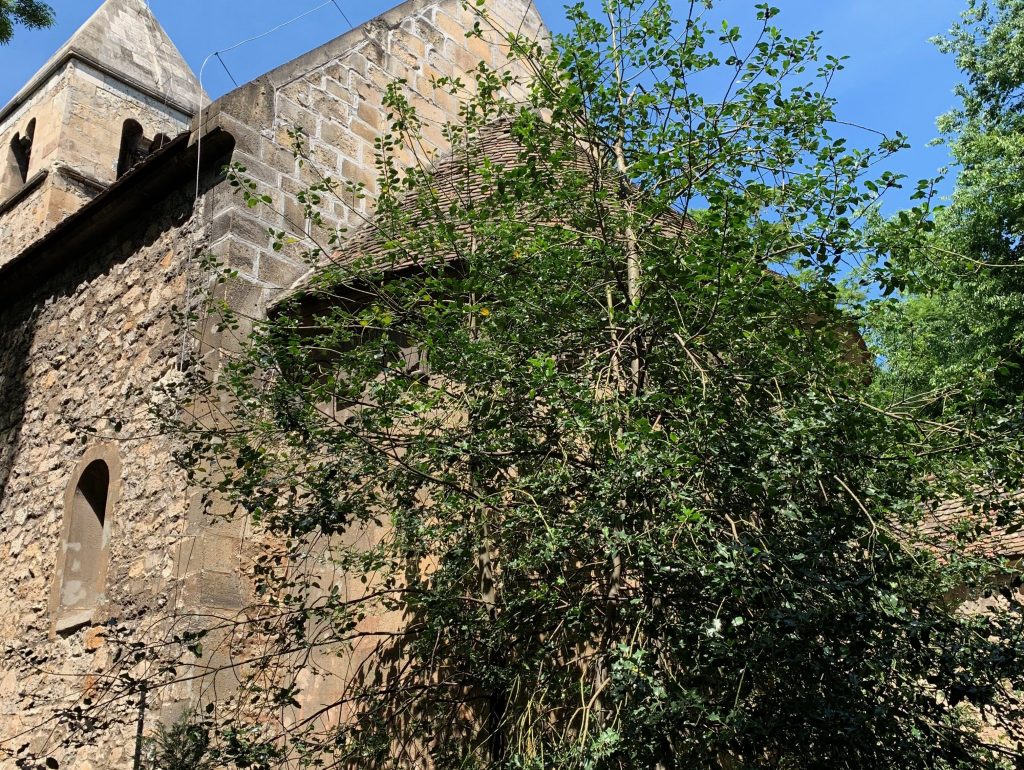
It is now time for a well deserved pic nic. Find yourself a suitable stop, sit on the grass, lay the table cloth, open the wine and bask into the beauty of this nature.
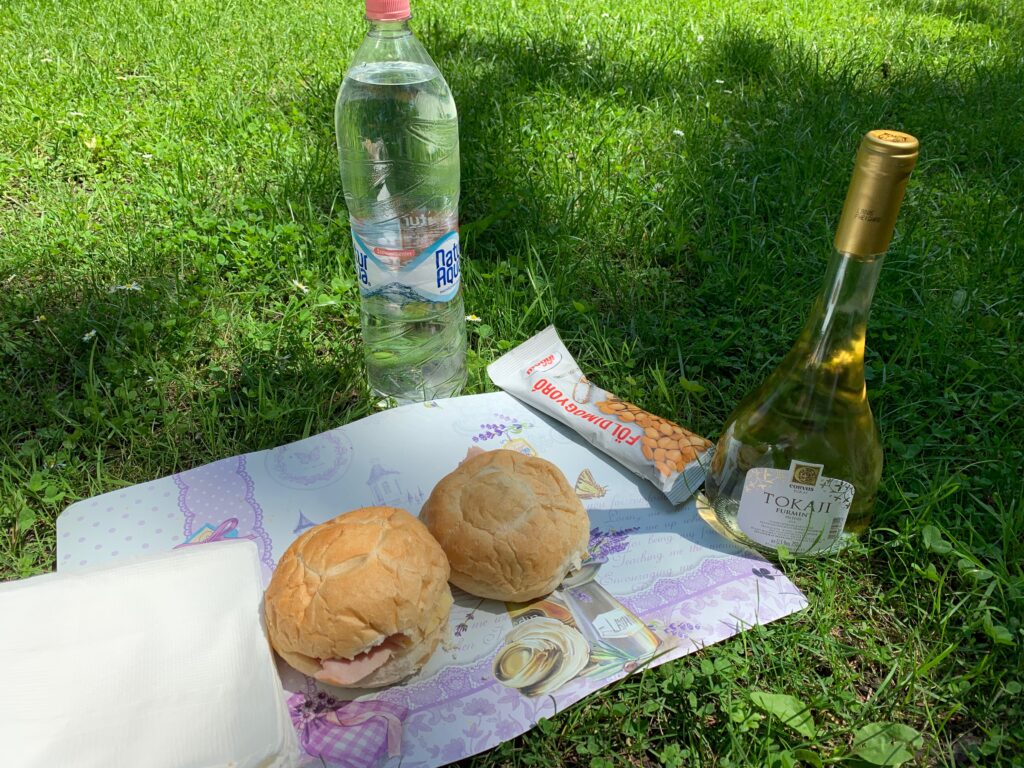
It’s time to head back towards the bridge; the western part of the park has not a lot to offer in terms of sightseeing.
Once you reached Saint Margaret Bridge back, turn left and walk (or get the Metro for 2 stops) until Andrassy ut. This majestic parade stretches for 2.5km, ending at Heroes’ Square and the sprawling City Park. On the UNESCO World’s Heritage list, it is a tree lined parade of knock-out architecture and is best enjoyed as a long stroll from the Opera House out to the park. On the way, don’t miss the House of Terror, on your left hand side.
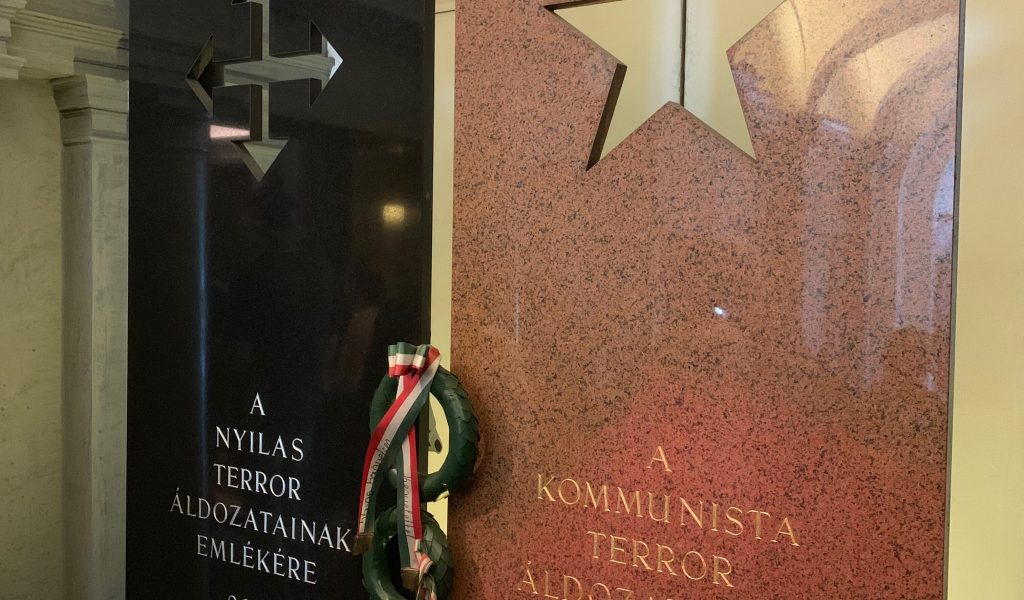
The startling museum called the House of Terror is housed in what was the headquarters of the dreaded AVH secret police. The building has a ghastly history, for it was here that many activists of every political persuasion that was out of fashion before and after WWII were taken for interrogation and torture. The walls are double thickness to mute the screams.
The museum focuses on the crimes and atrocities committed by both Hungary’s fascist and Stalinist regimes in a permanent exhibition called Double Occupation and visitors are greeted at the entrance by black ‘arrow cross’ of the fascists and the red Communist star.
But the years after WWII leading up to the 1956 Uprising get the lion’s share of the exhibition space. The tank in the central courtyard is a jarring introduction and the wall outside displaying many of the victims’ photos speaks volumes. Even more harrowing are the reconstructed prison cells (collectively called “the gym”) and the final Perpetrator’s Gallery, featuring photos of the turncoats, spies, torturers and cogs in the wheel from both sides, many of them still alive, who allowed these atrocities to take place.
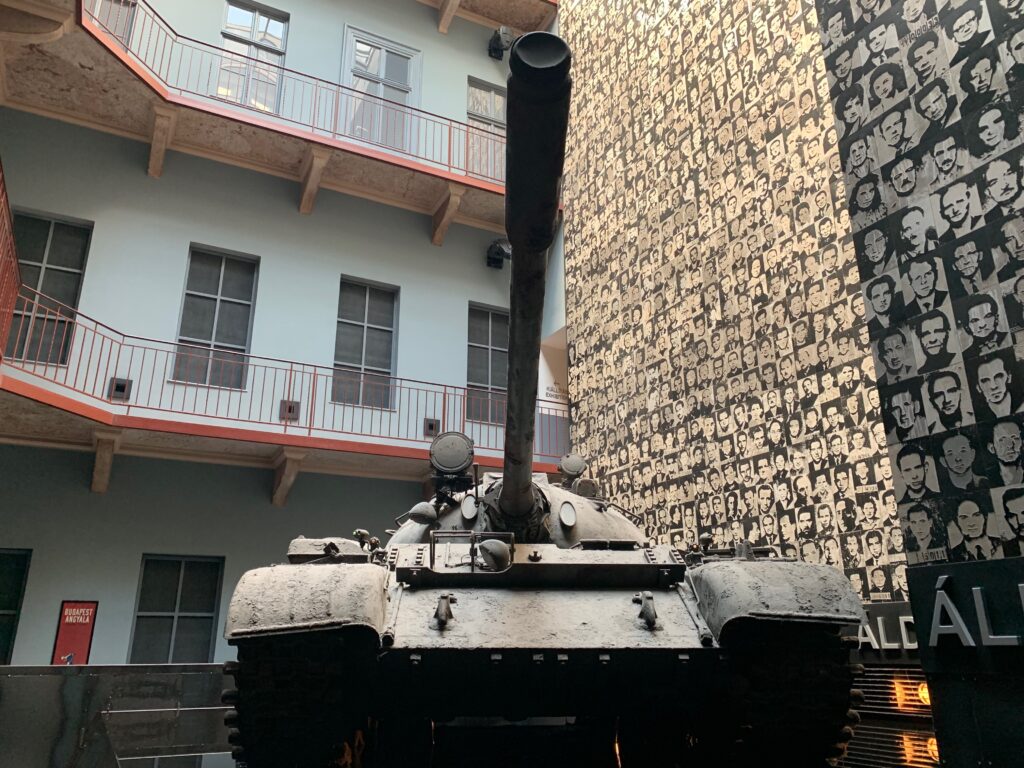
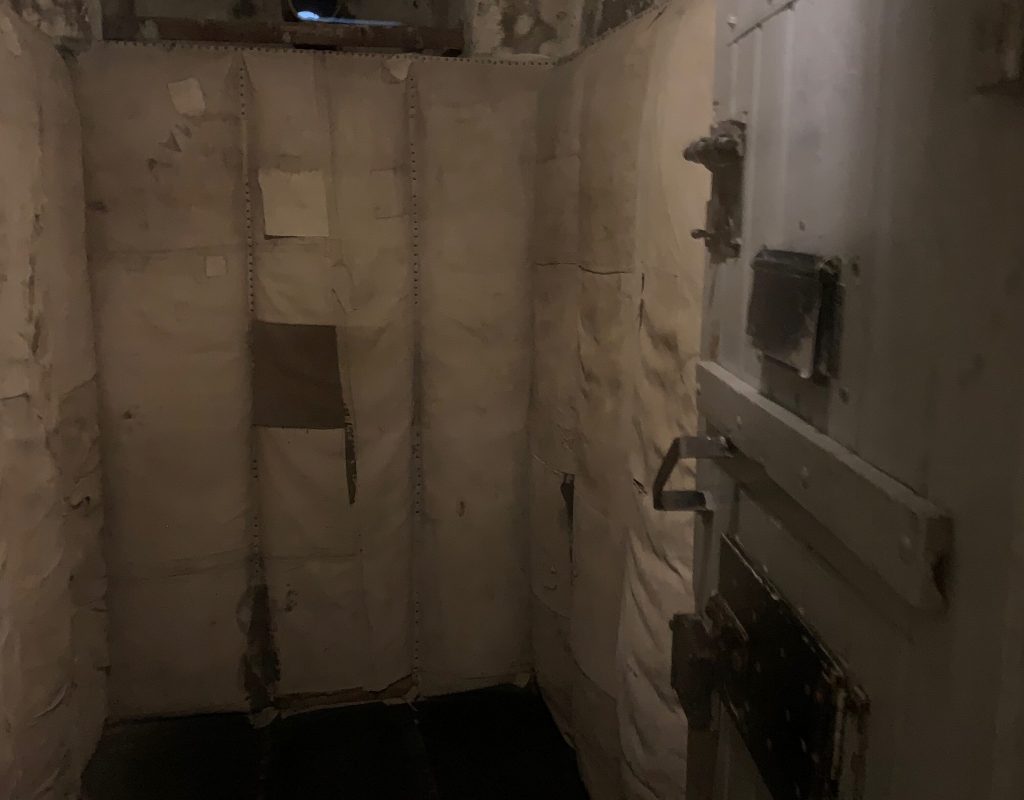
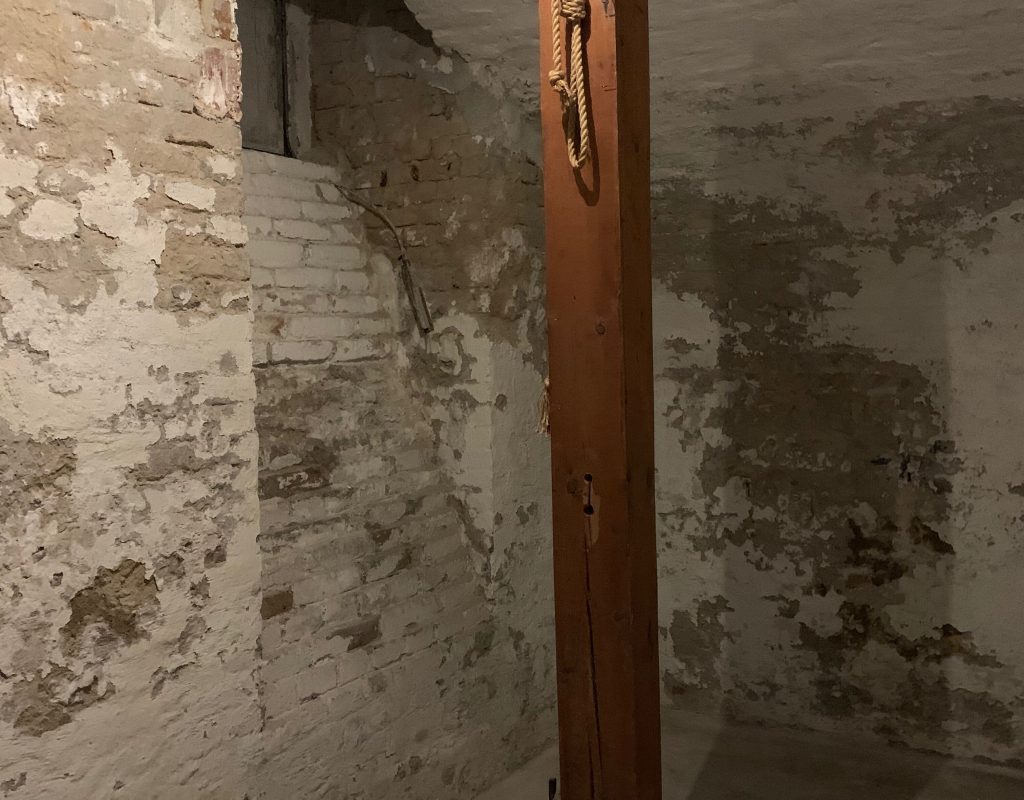
The House of Terror is worth visiting more for the atmosphere than for the actual exhibition. There are barely any English captions, a lot of videos and documentaries from the time but all in Hungarian. However, every room is set to convey the anxiety and the sense of imprisonment that was at the order of the day at the time: high-tempo music that makes you feel followed, low lights, a labyrinth built with fake plastic explosive where the walls are cloning on you.
Out of the Museum, grab a coffee in one of the various organic coffee houses that are lining the street, then continue your walk to Heroes’ Square and rest a bit in the park right behind it, watching the boat sail on the lake. The metro station at the center of the house is very convenient, and in just one stop you can be at Rosenstein Vendeglo for a typical dinner.